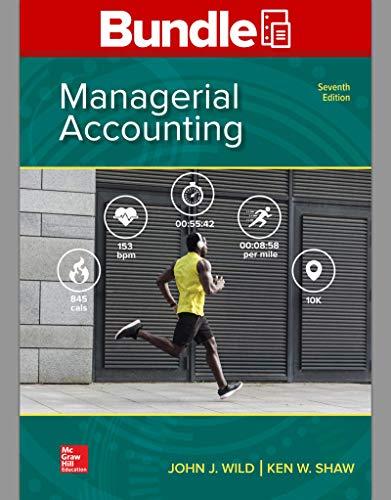
Concept introduction:
Contribution margin ratio:
Contribution margin ratio refers to the percentage of sales which is available to cover fixed costs and profit. In other words we can say that a ratio which is calculated on the basis of contribution margin per unit and sale price per unit, is known as contribution margin ratio.
Requirement 1:
Contribution margin ratio for each model.
Concept introduction:
Contribution margin ratio:
Contribution margin ratio refers to the percentage of sales which is available to cover fixed costs and profit. In other words we can say that a ratio which is calculated on the basis of contribution margin per unit and sale price per unit, is known as contribution margin ratio.
Requirement 2:
Which company’s smartphone sales contribute more to covering fixed costs?
Want to see the full answer?
Check out a sample textbook solution
Chapter 5 Solutions
Managerial Accounting + Connect Access Card
- I need answer this accounting problem todayarrow_forwardBeacon Manufacturing buys a delivery van for $48,000 at the start of the year. The van is expected to last 4 years and have a salvage value of $8,000. What is the depreciation expense per year under the straight-line method?arrow_forwardAmount of net sales should bearrow_forward
- Crystal Plastics uses the FIFO method in its process costing system. The melding department had $4,500 in material cost in beginning work-in-process inventory, and during the period, $62,500 in material cost was added. The equivalent units of production for materials during the period were 16,000 units. What is the cost per equivalent unit for materials? A) $3.91 B) $3.75 C) $4.20 D) $4.05arrow_forwardMalek Events Catering uses the high-low method to predict its total overhead costs. Past records show that total overhead cost was $27,400 when 850 hours were worked and $29,800 when 950 hours were worked. If Malek Events Catering has 880 hours scheduled for next month, what is the expected total overhead cost for next month?arrow_forwardPlease give me true answer this financial accounting questionarrow_forward
- Financial Accountarrow_forwardNot use aiarrow_forwardCrescent Manufacturing produces a single product. Last year, the company had a net operating income of $102,400 using absorption costing and $94,100 using variable costing. The fixed manufacturing overhead cost was $5 per unit. There were no beginning inventories. If 32,000 units were produced last year, then sales last year were_. ?arrow_forward
 Managerial AccountingAccountingISBN:9781337912020Author:Carl Warren, Ph.d. Cma William B. TaylerPublisher:South-Western College Pub
Managerial AccountingAccountingISBN:9781337912020Author:Carl Warren, Ph.d. Cma William B. TaylerPublisher:South-Western College Pub
